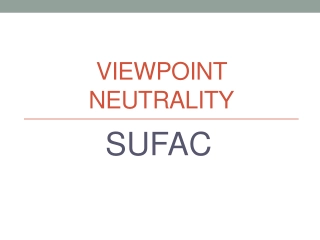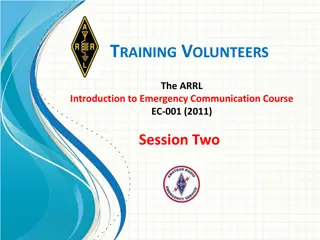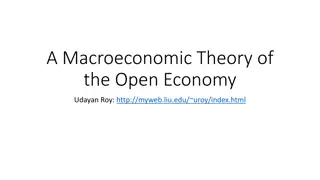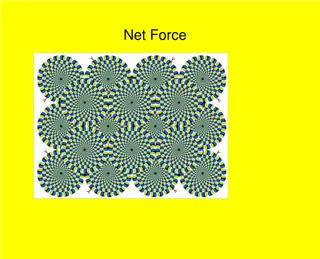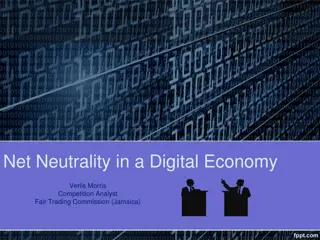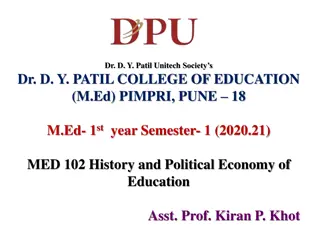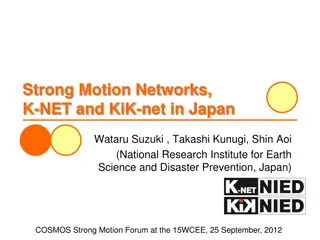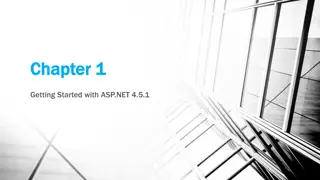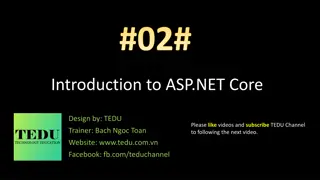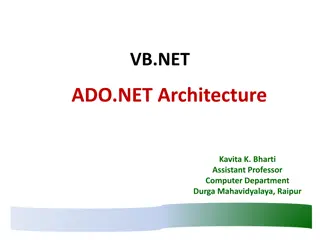Understanding Net Neutrality in India: Key Concepts and Regulations
Net neutrality in India ensures equal access to online content without discrimination. Telecom Service Providers are regulated to prevent differential tariffs for data services. Different stakeholders like consumers, TSPs, OTT service providers, and the government play crucial roles. Net neutrality is yet to be directly regulated by law in India, with ongoing discussions and consultations on policies and frameworks.
Download Presentation

Please find below an Image/Link to download the presentation.
The content on the website is provided AS IS for your information and personal use only. It may not be sold, licensed, or shared on other websites without obtaining consent from the author. Download presentation by click this link. If you encounter any issues during the download, it is possible that the publisher has removed the file from their server.
E N D
Presentation Transcript
The Net Neutrality in India and surrounding questions
What is net neutrality? What is net neutrality? The principle of net neutrality states that internet users should be able to access all content on the internet without being discriminated by Telecom Service Providers (TSPs). This means that (i) all websites or applications should be treated equally by TSPs (ii) all applications should be allowed to be accessed at the same internet speed, and (iii) all applications should be accessible for the same cost.
Telecom and Regulatory Authority of India (TRAI) released the Prohibition of Discriminatory Tariffs for Data Services Regulations, 2016 in February 2016. These regulations prohibit Telecom Service Providers from charging different tariffs from consumers for accessing different services online. The 2016 regulations that TRAI has released largely deal with the third aspect of net neutrality, relating to cost. i.e. all applications should be accessible for the same cost
To understand the concept of net neutrality, it is important to note the four different kinds of stakeholders in the internet space that may be affected by the issue. They are: (i) the consumers of any internet service, (ii) the Telecom Service Providers (TSPs) or Internet Service Providers (ISPs), (iii) the over-the-top (OTT) service providers (those who provide internet access services such as websites and applications), and (iv) the government, who may regulate and define relationships between these players. (TRAI is an independent regulator in the telecom sector, which mainly regulates TSPs and their licensing conditions, etc.)
What are OTT services? What are OTT services? OTT services and applications are basically online content. OTT providers may be hosted by TSPs or ISPs such as Bharti Airtel, Vodafone, Idea, VSNL (government provided), etc. They offer internet access services such as Skype, Viber, WhatsApp, Facebook, Google and so on. Therefore, OTT services can broadly be of three types: (i) e-commerce, (ii) video or music streaming and (iii) voice over internet telephony/protocol services (or VoIP communication services that allow calls and messages).
How is net neutrality regulated? How is net neutrality regulated? Until now, net neutrality has not directly been regulated in India by any law or policy framework. Over the last year, there have been some developments with respect to the formulation of a net neutrality policy. TRAI had invited comments on consultation papers on Differential Pricing for Data Services as well as Regulatory Framework for Over- The-Top Services (OTT). A Committee set up by the Department of Telecommunications (DoT) had also examined the issue of net neutrality.
Internationally, countries like the USA, Japan, Brazil, Chile, Norway, etc. have some form of law, order or regulatory framework in place that affects net neutrality. The US Federal Communications Commission (telecom regulator in the USA) released new internet rules in March 2015, which mainly prohibit: (i) blocking, (ii) throttling or slowing down, and (iii) paid prioritisation of certain applications over others. While the UK does not allow blocking or throttling of OTT services, it allows price discrimination.
What do TRAIs 2016 Regulations say? What do TRAI s 2016 Regulations say? The latest TRAI regulations state that: (i) no service provider is allowed to enter into any agreement or contract that would result in discriminatory tariffs being charged to a consumer on the basis of content (data services) (ii) such tariffs will only be permitted in closed electronic communications networks, which are networks where data is neither received nor transmitted over the internet
(iii) a service provider may reduce tariff for accessing or providing emergency services (iv) in case of contravention of these regulations, the service provider may have to pay Rs 50,000 per day of contravention, subject to a maximum of Rs 50 lakh, etc. It may be noted that, in 2006 and 2008, TRAI had suggested that the internet sector remain unregulated and non-discriminatory (net neutral).
https://www.bbc.com/news/world-asia-india-44796436 https://www.prsindia.org/theprsblog/net-neutrality-debate-india


